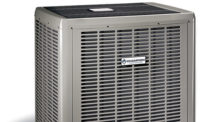Based on pointed criteria set forth by the American Council for an Energy-Efficient Economy (ACEEE’s) State Scorecard, Massachusetts and California are the most energy-efficient states in the nation.
The ACEEE produces its state scorecard annually. This year’s edition zeroes in on six policy areas in which states pursue energy efficiency, including utility and public benefits programs and policies, transportation policies, building energy codes, combined heat and power (CHP) policies, state government-led initiatives around energy efficiency, and appliance and equipment standards.
Massachusetts has become a flag-bearer of sorts for this annual list, winning at least a share of the title in each of the last six years. In 2016, California joined Massachusetts at the top of the rankings for the first time since 2010.
The methodology behind the rankings, per ACEEE, has the organization allocating 50 possible points to states among policy areas, including 20 points to utility and public benefits programs and policy metrics, 10 points for transportation policies and programs, seven points to building energy codes, four points to improved CHP policies, seven points for state government-led initiatives, and two points going to state appliance and equipment standards.
“Governors, legislators, regulators, businesses, and citizens are increasingly recognizing that energy efficiency is a critical state resource that keeps money in the local economy,” said Steven Nadel, executive director, ACEEE. “The past year has been an exciting time for energy efficiency with several states strengthening efficiency policies and programs. States are spurring efficiency investments through advancements in building energy codes, transportation planning, and leading by example in their own facilities and fleets. These investments reap large benefits, which give businesses, governments, and consumers more control over how and when they use energy.”
CALIFORNIA
“From a public-policy standpoint, California is definitely ahead of the curve,” said Ruzwa Cooper, president of Cooper Oates Air Conditioning in Sacramento, California. “Whether it’s Title 24, the public utilities commission, or what the California Energy Commission [CEC] has been doing, California is promoting energy efficiency across the board.”
California’s status atop the rankings was bolstered in part because it continues to lead the nation in setting appliance standards, having adopted standards for more than 100 products. Per ACEEE, within the past year, it became the first state to adopt standards for LEDs and small-diameter directional lamps, and it also updated its standards for HVAC air filters, fluorescent dimming ballasts, and heat pump water-chilling packages.
Leonel Trujillo, project manager of Inland Mechanical Systems in Corona, California, said the state currently uses about 50 percent less energy than the rest of the country, but always has room to improve. “Inland Mechanical Services has tested more than 600 HVAC units in the last two years, and we have found the average unit is only delivering 56 percent of its available capacity. So, when we talk about the potential to be better, California can definitely improve. This will only be achieved through customer education.”
Title 24, one of California’s most well-known energy-efficiency initiatives, addresses both residential and commercial energy efficiency.
Andrew McAllister, commissioner, CEC, said: “To reduce greenhouse gas emissions from building energy consumption, California’s highest priority is energy efficiency. California continues to prove that using energy wisely is good for both the economy and the environment. A robust and growing clean-energy economy enables real people to understand and choose between attractive options that improve their lives and achieve deep energy savings. With the right public-private cooperation and partnerships, we expect even greater things ahead.”
MASSACHUSETTS
For Massachusetts, being recognized as one of the most energy-efficient states in the country may feel a bit routine at this point, but Paul MacDougall, operations manager, MacDougall Plumbing and Mechanical LLC, South Weymouth, Massachusetts, said the distinction is more than justified.
“I know Massachusetts has a healthy incentive program to encourage energy-efficiency upgrades. Almost every project we do involves some sort of rebate-savings program. The program in place is definitely working well because every job includes it, and it is popular among customers.”
MacDougall said customers in the state of Massachusetts are well aware of rebate programs and actively seek them out.
“I always bring up rebate programs, but a lot of customers already know when something is available. The majority of our customers, even on the commercial side, know about rebates. They really want efficient products to bring operating costs down.”
Judith Judson, commissioner of the Department of Energy Resources, Commonwealth of Massachusetts, said: “The Baker-Polito administration [Massachusetts Gov. Charlie Baker and Lt. Gov. Karyn Polito] is committed to supporting energy-efficiency policies, which are consistently proven to be the most cost-effective way to reduce ratepayer costs and lower emissions. By working with our utility partners, the Commonwealth’s ratepayers continue to realize billions of dollars in benefits from our nation-leading energy-efficiency policies and programs.”
LOOKING AHEAD
Massachusetts and California cannot afford to rest on their laurels if they hope to stay atop the 2017 ACEEE scorecard. Missouri, Maine, and Michigan were the three most improved states in this year’s study.
“I think other states are catching up to California,” said Cooper. “However, the legislature and governor just came out with a new set of energy-efficiency expectations and building efficiencies, in particular, targeted at 2030. Those are very aggressive targets that are going to continue to push us to the forefront of the country.”
MacDougall said the populace in Massachusetts isn’t afraid of incentives going away anytime soon, and the state is always looking to stay ahead of the curve in regards to whatever incentives it can provide to encourage energy efficiency.
SIDEBAR: A CALIFORNIA CASE STUDY
One example of California’s efforts toward greater energy efficiency is the following project from ABM, a facility services provider, which is utilizing the California Clean Energy Jobs Act (Proposition 39).
Company: ABM
Customer: Salida Union School District in Salida, California
Installation: The district aimed to replace 84 HVAC units that were 25 years old with more efficient replacements. Additionally, outside economizers and/or fresh-air intakes were installed to improve IAQ and reduce the cooling load for Dena Boer Elementary, Mildred Perkins Elementary, Salida Elementary, and Sisk Elementary Schools. Mounting solar photovoltaic energy systems at Salida Elementary and Mildred Perkins Elementary provided renewable, emissions-free energy sources. A cool roof restoration at Dena Boer Elementary covered almost 40,000 square feet. Additional savings were provided at Dena Boer Elementary, Mildred Perkins Elementary, Salida Elementary, Sisk Elementary, and Salida Middle Schools as well as the district office courtesy of water-saving equipment.
Completion: Expected in summer 2017
Objective: The parties involved set out to save Salida Union School District more than $4.6 million in energy and operating costs over a 20-year period by providing energy-efficiency enhancements and water-conservation measures to multiple schools within the district. The school district had been facing rising operating and maintenance costs due to aging facility equipment. Equipment failures became regular and costly events, and the district did not have the money necessary to replace its equipment nor did it want to burden local citizens with a tax increase to replace these failing systems.
Work Completed: The California Clean Energy Jobs Act (Proposition 39) allocates revenue to local education agencies to support energy-efficiency and alternative-energy projects along with related improvements and repairs that reduce operating costs and improve health and safety conditions in public schools. The California Energy Commission (CEC) approves and allocates these funds according to strict accountability requirements that aim to ensure the funds will deliver the expected outcomes. Using this information to create a detailed energy-efficiency plan and project scope, ABM’s team helped the district navigate the CEC’s strict guidelines to successfully obtain a Proposition 39 grant to fund the project. ABM also helped secure a zero-interest loan through the CEC’s Energy Conservation Assistance Act for Education.
Information courtesy of ABM. For more information, visit http://bit.ly/ABM-SALIDA.
Publication date: 12/5/2016
Want more HVAC industry news and information? Join The NEWS on Facebook, Twitter, and LinkedIn today!











